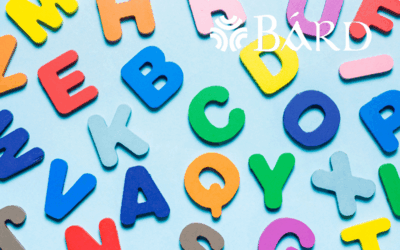You’re sat staring at your computer screen. You’ve rewritten the sentence five times. You’ve debated its tone with your team. You’ve even read it out loud to your dog. But how do you really know if your content will work in practice?
Welcome to the overwhelming world of content testing, where great writing meets real-world validation.
If you’re UX writer, technical communicator, or product designer, you need to understand that testing isn’t just for engineers and marketers. Content testing is one of the most powerful tools writers can utilise to prove the impact of their work and ensure clarity for their users.
Let’s explore how.
What is content testing?
Content testing is a subset of UX research focused specifically on how users interact with your words, within help docs, UI, error messages, onboarding flows, and more.
It helps answer questions like:
- “Do users understand this instruction?”
- “Is this terminology confusing?”
- “Which version of this call-to-action gets more clicks?”
Put simply: Content testing replaces assumptions with evidence.
Why content testing matters
Clear writing is essential, but clarity isn’t always obvious, especially when you’re an expert in the field. A phrase that seems fine to you may leave users scratching their heads. Testing ensures this doesn’t happen.
Benefits include:
- Faster comprehension
- Fewer user errors
- Improved task completion
- Higher conversion rates (for UX copy)
- Measurable proof of content ROI
It also gives writers a stronger seat at the product table, by showing how writing decisions affect real outcomes.
Beginner-friendly content testing methods
1. Comprehension surveys
What it is:
Ask users to read a sentence or paragraph, then answer a few questions so you can gauge their understanding.
Use it for:
- Onboarding flows
- Help content
- Form instructions
Example question:
After reading this paragraph, what action would you take next?
Tool suggestions:
- Google Forms
- Typeform
- Maze
2. Highlighter tests
What it is:
Users highlight parts of a content block based on prompts like:
- “What is most helpful?”
- “What is confusing?”
- “What would you skip?”
Use it for:
- Long-form content
- Release notes
- SOPs
Why it works:
This visual feedback helps identify which parts of your content are resonating with users and which parts are being ignored.
3. 5-Second tests
What it is:
Show users a screen or paragraph for 5 seconds, then ask:
What do you remember? What was the main message?
Use it for:
- Calls to action
- Home pages
- UI instructions
Why it works:
Tests for clarity, not perfection. If users can’t grasp the main point in 5 seconds, it likely needs tightening.
4. A/B testing (split testing)
What it is:
Show two versions of a message or button to different groups. Measure which performs better.
Use it for:
- Button copy
- Error messages
- Signup form labels
Tool suggestions:
- Google Optimize
- Optimizely
- VWO
Note: This works best when you have a decent volume of traffic to analyse results.
5. Cloze tests (fill-in-the-blank)
What it is:
Remove key words from a paragraph and ask users to fill them in. Helps assess how predictable and understandable your content is.
Use it for:
- Instructions
- Help content
- Onboarding text
What to do with the results
Testing only matters if you act on the insights. Look for patterns like:
- Frequent confusion over a certain word or phrase
- Missed steps in instructions
- Clear preference for one tone over another
Use these signals to revise, simplify, and re-test.
Remember: The goal isn’t just to write well, it’s to write in a way that works for your audience.
Start small, iterate often
Content testing doesn’t have to be formal or complex. Start with one screen, one sentence, or one paragraph. Ask a colleague. Ask a user. Ask three.
Every test helps move your writing from educated guess to evidence-based decision.
Quick checklist: ready to test?
- Have a specific question or hypothesis (e.g., “Will users understand this term?”)
- Choose the right method (survey, A/B, highlight, etc.)
- Keep it short—respect your testers’ time
- Analyse responses for patterns, not outliers
- Use findings to iterate and improve
- Share your insights with your team
Final thoughts: from good to great
You don’t have to be a UX researcher to validate your content. With a few simple tools and a curious mindset, you can bring data and confidence to your writing decisions.
So the next time someone asks, “Why did you write it that way?”, you’ll have the answer backed by real users.
Because the best writers don’t guess.
They test.
Want to bring content testing to your docs, microcopy, or onboarding flows? Our team specializes in writing that’s not only clear—but proven effective. Let’s talk.



